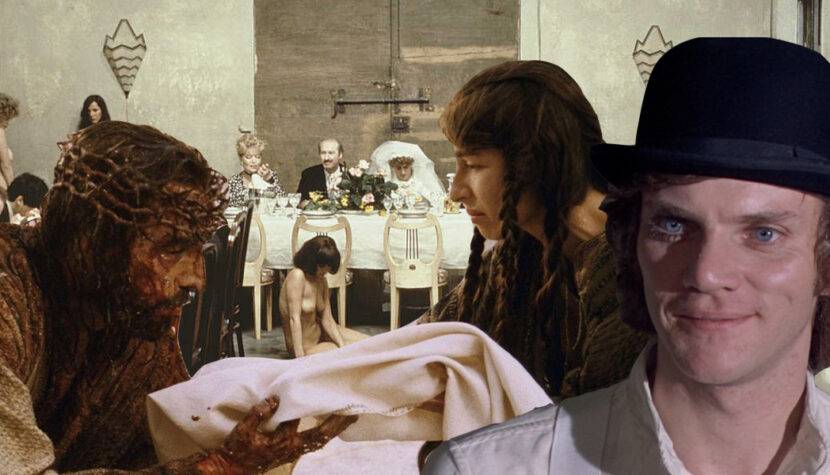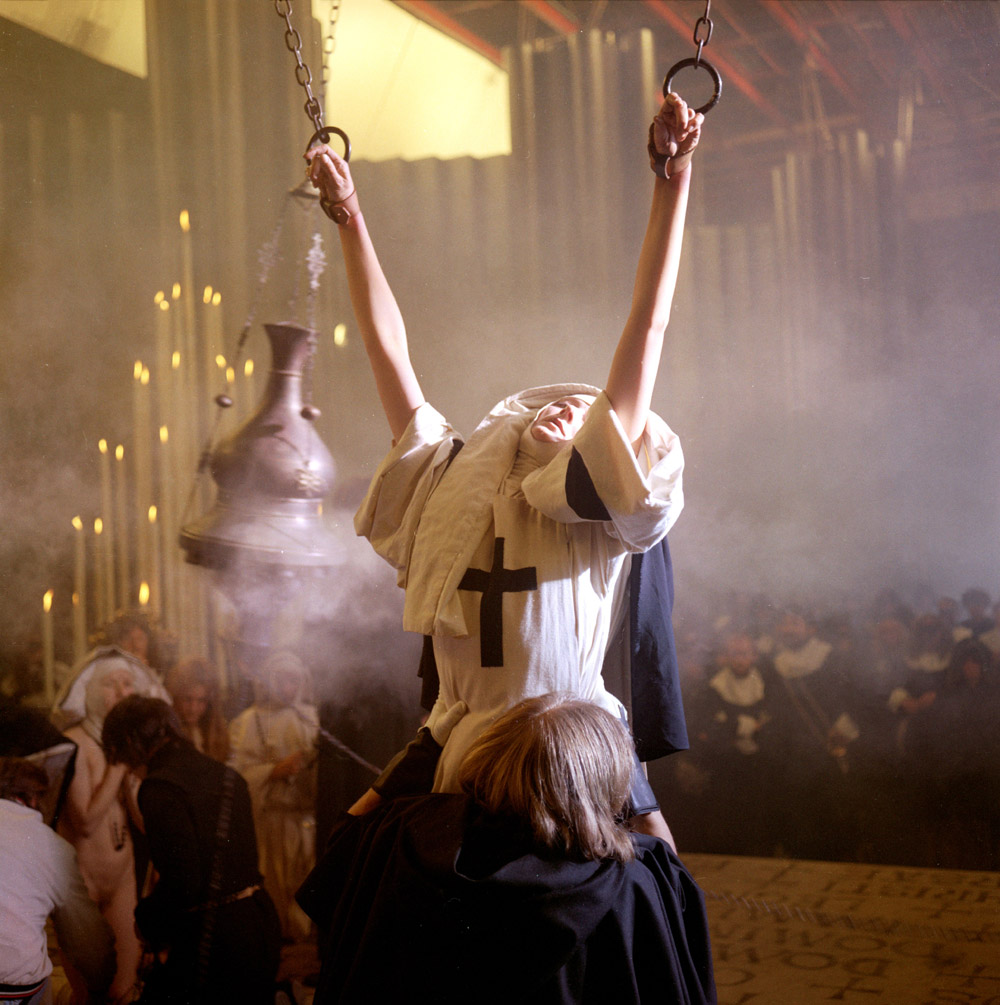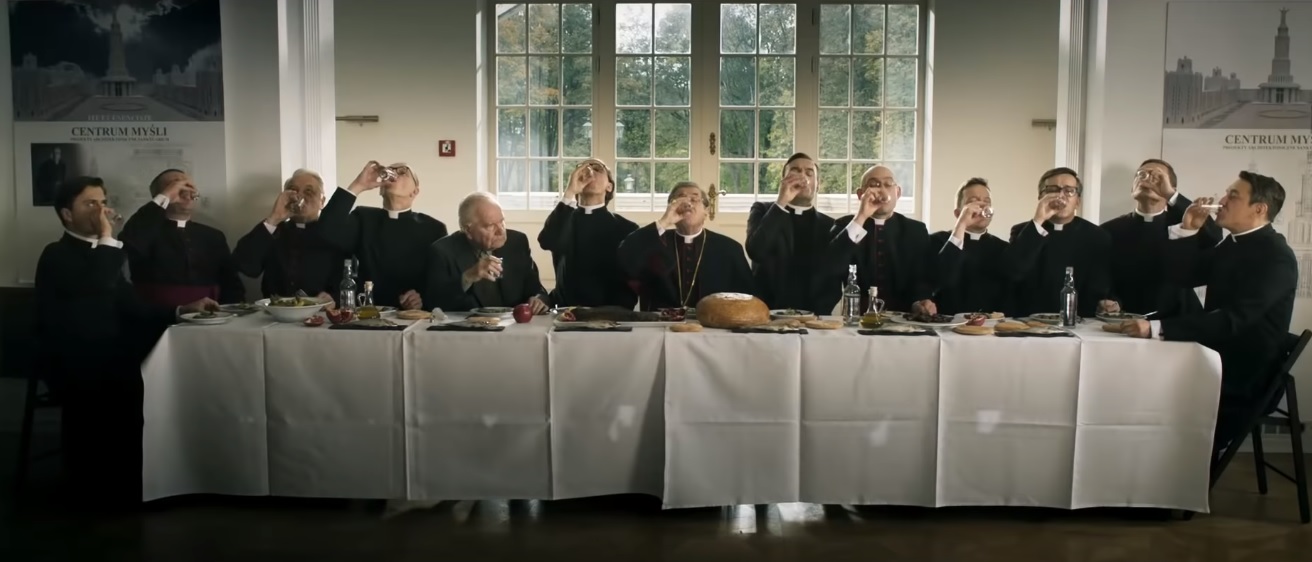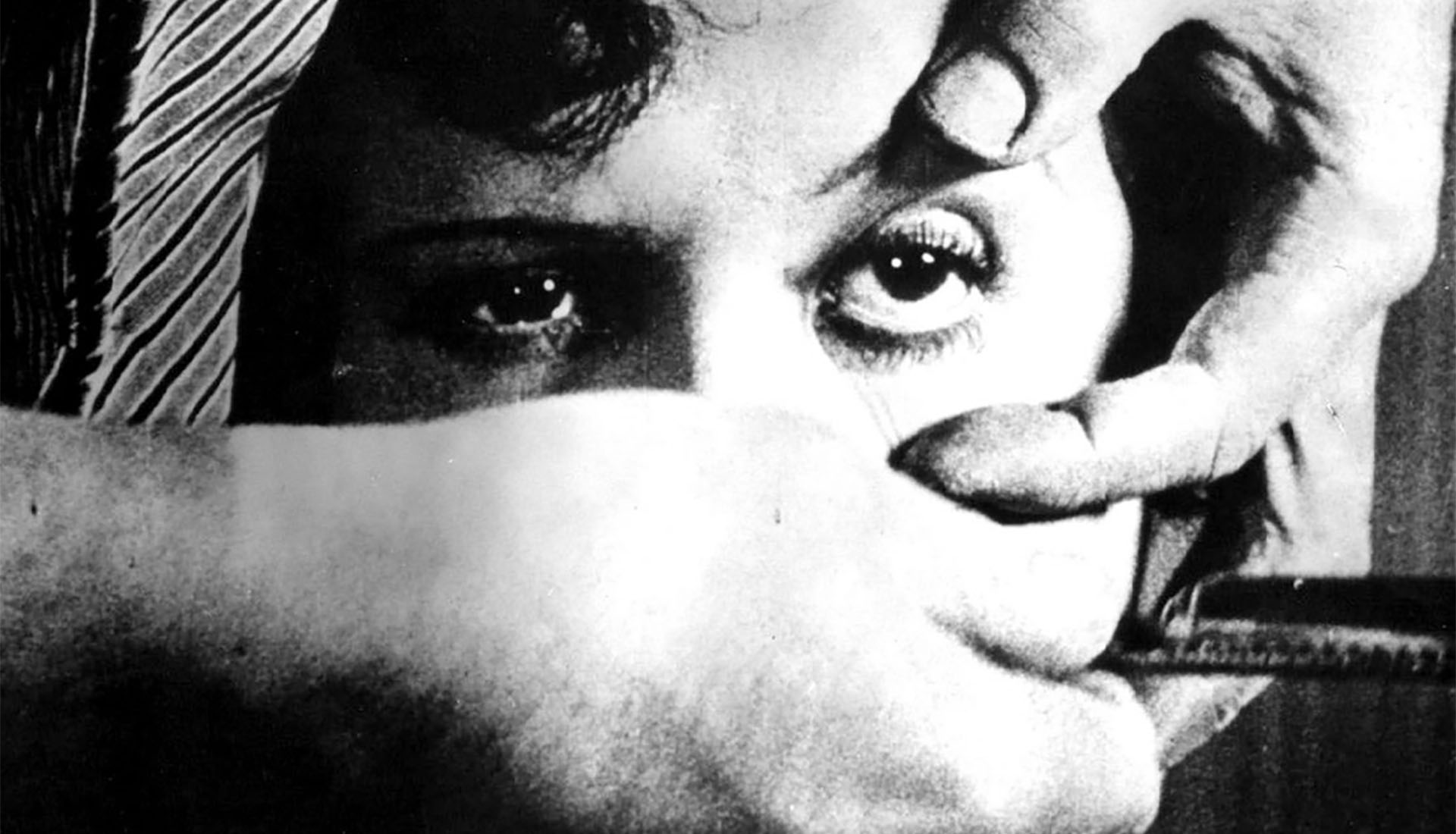The most CONTROVERSIAL movies of all time ranked

Since its birth, successive creators have been pushing the boundaries of controversy, testing the endurance and understanding of viewers. However, it was often associated with numerous protests or scandals, which meant that some of the stigmatized films were pulled from cinema screens.
30. Crash (1996)

After the subtle film Madame Butterfly a few years later, David Cronenberg hit the gas to the metal literally and figuratively harder than ever. Crash, based on the novel by James Ballard, had its world premiere at Cannes and stunned the critics and the jury. Few people were prepared for a film where the characters seek erotic stimulation through fatal car accidents. Sexual decadence seen through the prism of automotive technology, the evolution of which causes the regression of relationships and bonds. Crossing the boundaries of the body and machines uniting in transgressive needs Cronenberg made the most daring and controversial film in his oeuvre, which is still a challenge for many viewers. A special distinction at Cannes proves that this unconventional and morbid film is not an empty product of a sick imagination, but conveys important, philosophical content under the mask of cold deviation.
29. I Spit on Your Grave (1978)

Among horror and slasher films, there is a large group of films that tackle the subject of rape from a pro-woman, feminist perspective. This was the meaning of, for example, Teeth, in which the main character’s vagina, equipped with fangs, became her defense tool. Such was the overtone of the classic bloody independent cinema Caliber 45, with a mute heroine taking revenge on random men for the harm she suffered. However, I Spit on Your Grave should be considered the godmother of the whole rape and revenge genre – a subgenre of exploitation cinema telling about the brutal revenge of a raped woman on her tormentors (or men in general). In the first act of I Spit on Your Grave we see extremely unpleasant, long and repulsive scenes of gang rape of a young writer. In the later part of the film, we will support the woman in eliminating her abusers. The director of I Spit on Your Grave was inspired by his own experience, namely helping a rape victim. Shaken by this event, he wrote a scenario in which, at least in his imagination, he could bring justice to beasts who committed similar acts.
28. The Devils (1971)

The Devils is said to be one of the most iconoclastic religious films. The 1971 film is about a real person, a 17th-century priest sentenced to torture and eventually burned at the stake. The production caused a scandal – after all, we could watch an orgy of nuns on the screen, “checking” virginity with macabre devices or masturbation with the figure of Christ. The Devils were given an X category for pornography. In many countries, the production did not enter the cinemas, protests were made before the screenings. In the reviews you could read that it was a festival of perversions, even the famous critic Roger Ebert gave the film a zero point in protest. But director Ken Russell uses a controversial form to convey a really worthwhile plot. This is not about shocking for the sake of shocking.
27. Man Bites Dog (1992)

Man Bites Dog is a film that stuns with its realism. And I don’t know whether to laugh or cry. A group of filmmakers follow in the footsteps of professional killer Ben, who talks about his profession. While the camera records subsequent burglaries and murders, the main character oozes pseudo-philosophical maxims and talks about art and society in a sublime way. Initially distant from the murderer, the filmmakers begin to cross a dangerous line, becoming partners in Ben’s criminal activities, drawing terrifying satisfaction from it. I felt dirty and embarrassed after watching Man Bites Dog, mostly because I enjoyed it. It can be interpreted as a funny, brilliant digression on the nature of violence in movies, and Ben himself can be understood as a pretentious caricature of a serial killer. However, the brash cruelty and realistic violence will put many viewers off. The film was banned in some countries, including Sweden.
26. Martyrs (2008)

One of the leading works of French Extreme is a shocking horror, which initially suggests the action of forces not so much fantastic as demonic, only to later replace them with the unbearable cruelty of man. Two girls take revenge on a family of kidnappers/sadists in an extremely brutal style, but this is nothing compared to the philosophy of the torturers who seek enlightenment in the pain of their victims. Thus, the second half of Pascal Laugier’s film becomes an example of torture porn in its purest form, where the unimaginable torment of one of the heroines is the subject of the film and the goal of transcendence for a group of hideous, self-righteous people. The worst thing here, however, is not to shock with sadistic violence, but to make it a spiritual value. A uniquely disturbing cinematic experience that has divided viewers and critics around the world.
25. Kids (1995)

The film with Rosario Dawson and Chloë Sevigny in the cast is only a seemingly happy picture of the then (or only?) American youth. In fact, it’s a bitter portrait of little ones that no parent would want to see. The on-screen teenagers drink, take drugs, swear and have sex – in ways that would put many adults to shame – even though some are barely twelve years old. This mix alone was enough to cause quite a storm at the time of the premiere. And even if today this film seems to be somewhat forgotten, not to say faded away, it still remains an interesting, up-to-date and thoroughly honest look at minors.
24. Clergy (2018)

Three stories of three priests and three different life ways – one of them ideally finds himself in the demoralized structures of the Church, the other wants to heal them, and finally the last one simply tries to leave this dysfunctional organization. Wojciech Smarzowski specifically and reliably attacks the Church, and at the same time leans deeply over its members. In this way, he creates an extremely humanistic image that can shock (or offend!) Only those who have so far been blind to the structural sins of the Polish clergy. However, this is not a flaw, Clergy is a very good movie, perfectly played (the outstanding Robert Wieckiewicz) and definitely worthy of attention.
23. Freaks (1932)

Between the widespread use of sound and the strict enforcement of the rules of the Hays Code, there was a brief episode in the history of Dreamland known as Pre-Code Hollywood. Although the code was adopted as early as 1930, its oversight was not sufficiently effective until 1934. Had it not been for this five-year gap, Freaks would probably never have been created.
The film takes us to the world of a closed community of circus performers, where most of the attractions are artists with deformities, genetic diseases or bizarre ailments – the titular freaks. However, the key here is not the story, but the cast of the film, which included people with real deformities, genetic diseases and bizarre ailments – no special effects. When Louis B. Mayer saw the cast, he was horrified and tried to shut down the production. However, MGM’s head of production, Irving Thalberg, pushed for the realization. This was right after the success of Universal’s Dracula and Frankenstein, so Thalberg was probably looking for his own “monster movie” for the Metro-Goldwyn-Mayer stable. Todd Browning, on the other hand, not only made Dracula, but also worked in a circus as a young boy, so there was no better candidate to direct. Apparently, the test screening was a disaster and Thalberg even wanted to edit the film, but there was no time for that – on January 28, 1932, at the Fox Theater in San Diego, an audience of 3,000 people saw, probably as the only one in history, the full 90-minute version of Freaks. Although that particular screening was a success, the film was later cut and relieved of some of the most shocking scenes, leaving the audience with the version just over 60 minutes long. However, even after the cuts, Freaks were banned in several cities and states in the US, as well as throughout Australia and the UK. What was shocking above all was physical dissimilarity of the characters, but there were also voices that the film was made at the expense of the artists according to the well knows circus rule: by turning them into a spectacle. However, the warm portrayal of the characters and the film’s punchline point to the opposite. Browning successfully draws us into the specific environment of traveling artists, where social outcasts make up the community, misfits enjoy ordinary life, but the most beautiful and fittest are those degenerated the most. Today, in the global circus, when through social media each of us can be both a spectacle and a cruel mocker, this film about empathy and being a decent human being does not lose its relevance.
22. Men Behind the Sun (1988)

Controversial topic, but also controversial execution. The story of the Japanese Unit 731, which during World War II conducted cruel experiments on prisoners in order to invent biological weapons. The sadism of the moments when we watch, for example, how the skin and flesh of a woman’s hands exposed to extreme temperatures peel off in a few seconds is terrifying, as is the realization that it really happened. Mou Tun-fei’s film has a style close to the documentary and careful production, bringing those events even closer to the viewers. But the creators themselves made several dubious choices – in the scene of the operation to remove the child’s organs, they used shots of a real autopsy, and on another occasion they threw a live cat to be eaten by rats. Despite this (or perhaps because of it), it is difficult to remain indifferent to the topic of this Chinese horror film, which shows human amorality that even war cannot justify.
21. Cargo 200 (2007)

Cargo 200 is probably the best, and certainly the most expressive work in the entire oeuvre of Alexei Balabanov. You can admire this film, you can look away from it with disgust, but you certainly can’t pass by it indifferently. Cargo 200 tells the story of the events that took place at the end of the Soviet Union, in 1984. I don’t know to what extent his script is a relation and to what extent it was fictionalized, but you can be sure that Balabanov, when he informed that his film is based on facts, was not lying. Such a story simply could not have been invented, at least not by a sane person. Once again, it turns out that life can write the most engaging and at the same time the most gruesome scenarios. And that by sheer coincidence even the most improbable stories can take place. Balabanov’s movie can be read as a kind of reconciliation with the reality in which he lived, with which he had to struggle. I think that there is even an attempt to explain how such stories spring up in Russia like mushrooms after rain – I was struck by the sentence spoken by Antonina at the end of the film: “They have their own business, still from the camp.” I immediately remembered reading Solzhenitsyn and Shalamov. If anyone has read the Gulag Archipelago, they must understand that Russian society has suffered such a trauma that it will not be normal there for a long time.
20. Bad Lieutenant (1992)

I remember that moment when Ferrara’s film was on the video rental shelves, Harvey Keitel naked on the cover, an age limit warning that the film was intended for viewers over 21. On the back of the box, critics said that the film would cause despair, and Oliver Stone called it the best crime thriller since The French Connection. Indeed, the title character was shown mercilessly especially for American cinema at that time. A moralless cop seeks out the nun’s rapists while also seeking salvation. Around the big city dirt, cynicism and indifference that the title lieutenant has soaked up with. The most discussed film by Ferrara offended many viewers. Harvey Keitel gave a very convincing performance, only few actors could have such courage.
19. An Andalusian Dog

The fact that dreams can arouse considerable controversy was already seen by the audience in 1930, when the flagship surrealist film, An Andalusian Dog, had its premiere. Reportedly, the director, Luis Buñuel, before its first screening, filled his pockets with stones, prophylactically insuring himself in the event of an extremely negative reception of the film – and no wonder … It is known that the innovative editing and symbolic shocking images with turpistic images were much more shocking then than today, but still the scene of cutting the eyeball with a razor in this unbearable close-up still evokes shivers or is a pioneering cinematographic source of ommetaphobia (some snapshots cannot simply be unseen).
18. The House That Jack Built (2018)

The chief manipulator and provocateur returned after years of banishment. The doors of Cannes opened again for him after the production of The House That Jack Built, a film that somehow sums up his artistic way of expressing his thoughts. And since it is a very daring silhouette of a serial killer, drenched in a blunt, sour sauce of self-mockery, breaking the rules of the thriller, seeing crimes as an indicator of culture and art, it is not surprising that there were justified controversies. Von Trier is in his element here, playing on your nerves again, and under his watch Matt Dillon finally showed what he can do.
17. Borat: Cultural Learnings of America for Make Benefit Glorious Nation of Kazakhstan (2006)

A perverse comedy, consisting of serving jokes with a poker (yet extremely colorful) face and convincing people to the truth of the experiment in which they unconsciously participate. So, created by Sacha Baron Cohen, the individual, allegedly from Kazakhstan, goes hard on the gang, offending and consternating everyone in his path in a beautiful way – from feminists, through Jews, and ending with viewers. The strength of this project and the accuracy of the joke are evidenced by the numerous controversies it has caused, including dissatisfaction among the authorities of Kazakhstan itself. Today, years after its premiere, the making of such a film would probably be received even more negatively (if it were possible at all), which only emphasizes the regression of American comedy and the overt censorship not so much of cinema as of human behavior and sensitivity to which Western culture has voluntarily submitted in the past decade.

